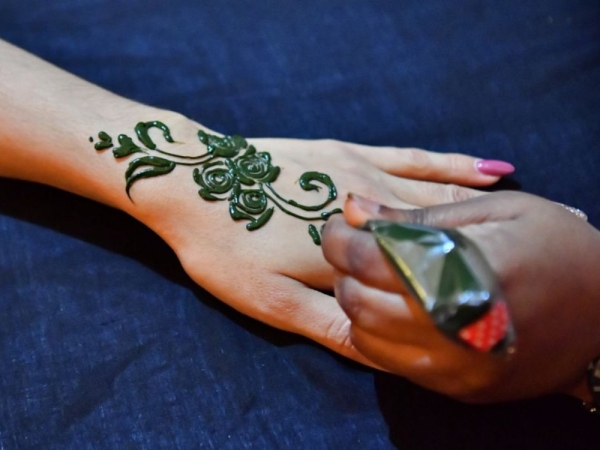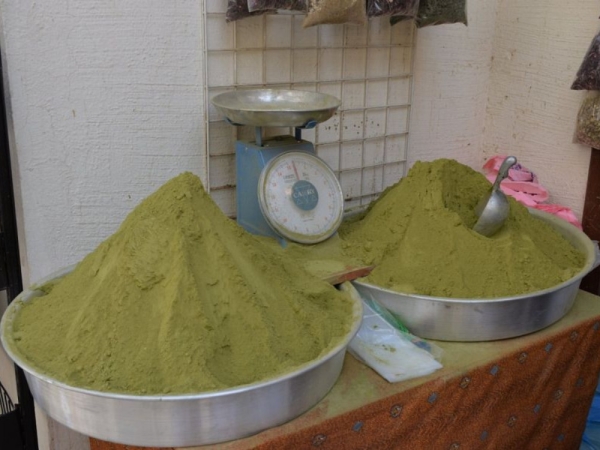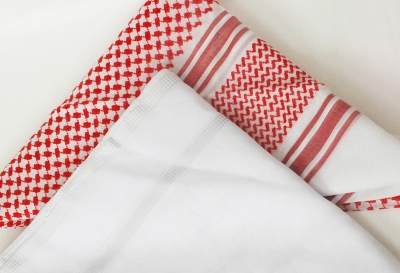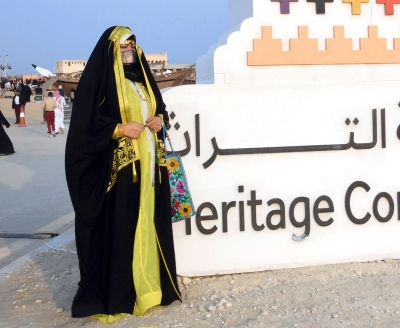

Henna is a dye prepared from the henna tree (Lawsonia inermis, Lythraceae). The color of henna powder differs from its stained color on the skin. In the Kingdom of Saudi Arabia, the term "henna" also refers to the art of intricate designs applied to the hands and feet, a tradition associated with wedding ceremonies in certain provinces of Saudi Arabia.
Once the henna color transitions from dark red to golden yellow, it remains for a few days before gradually fading through peeling, typically within one to three weeks.
Uses of Henna
Henna is used as a dye for skin and hair, including varieties such as black henna and neutral henna, both derived from the henna plant. In Saudi traditions, certain pre-wedding celebrations are referred to as the "Henna Night or al-Ghumrah Night", where women from the families of the bride and groom gather to adorn the bride with henna designs.
The specialized henna artist, known as al-Muhanniyah or al-Naqqashah, creates intricate henna patterns for the bride. This craft is a traditional women's profession and a distinctive form of artistic expression engraved on the bride's hands. It symbolizes joy and happiness, preserving ancient customs that women continue to celebrate with pride.
Among the styles of henna designs for brides are patterns that extend to the shoulders on the arms and to the mid-calves on the legs. These include Indian designs or al-Jouri patterns specifically created for brides, either filled or shaded. Other henna artists may also participate in adorning the bride’s sisters and relatives. For example, al-Misha'ab design is popular among elderly women, while simpleral-Qabdahdesigns are created for children. Henna Night is accompanied by traditional folk songs celebrating the bride and sharing in the joy of her marriage. Henna is also used by some men to dye their hair and beards.
Henna on the UNESCO List
In 2024, Saudi Arabia, in collaboration with several other countries, inscribed the traditions associated with henna designs on the Representative List of the Intangible Cultural Heritage of Humanity by the United Nations Educational, Scientific, and Cultural Organization (UNESCO). Henna is recognized as a social heritage that strengthens community bonds, serves as a cultural symbol of joy and optimism, and represents an inherited art form mastered by women and passed down through generations.
Related quizzes


